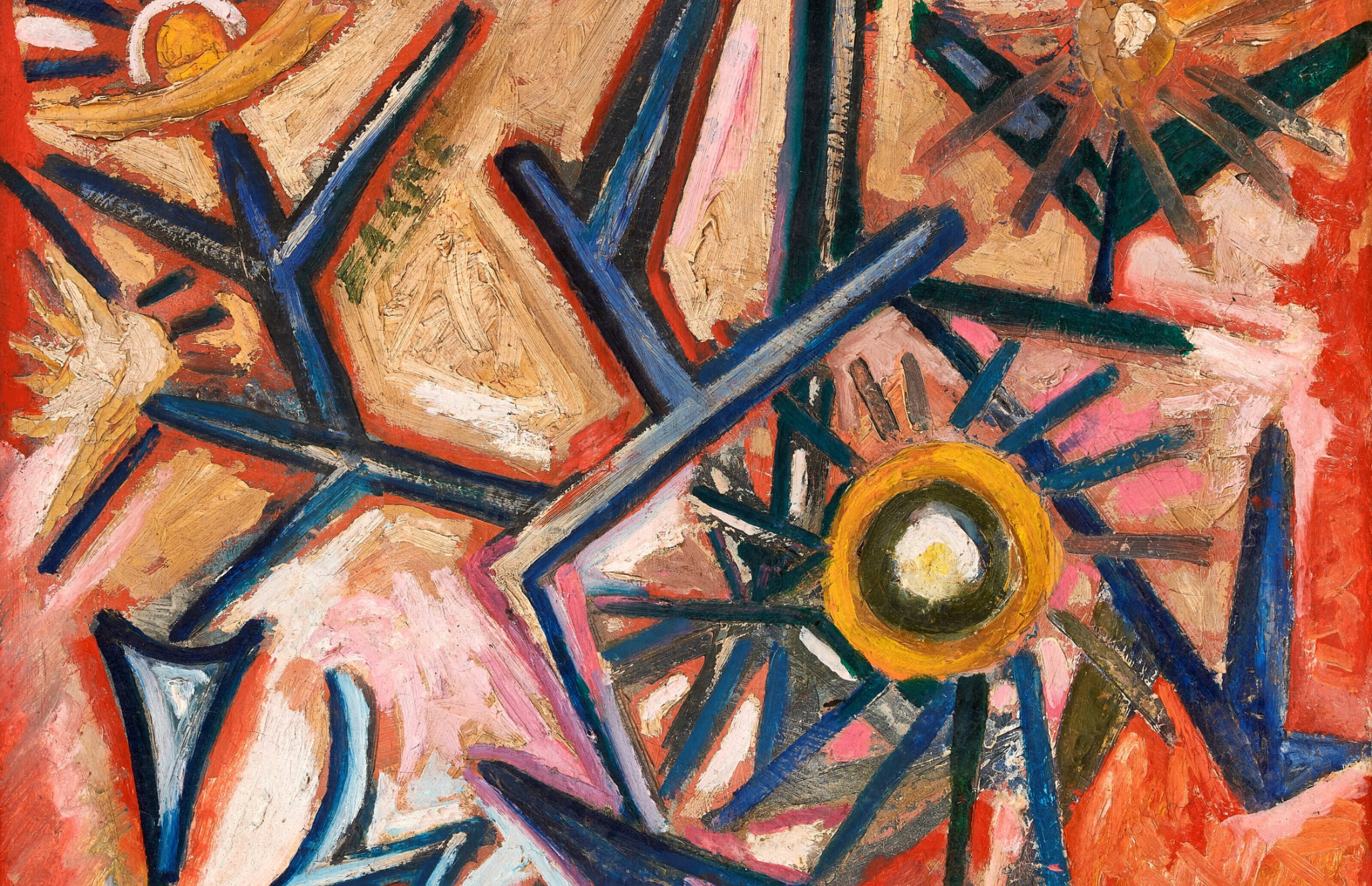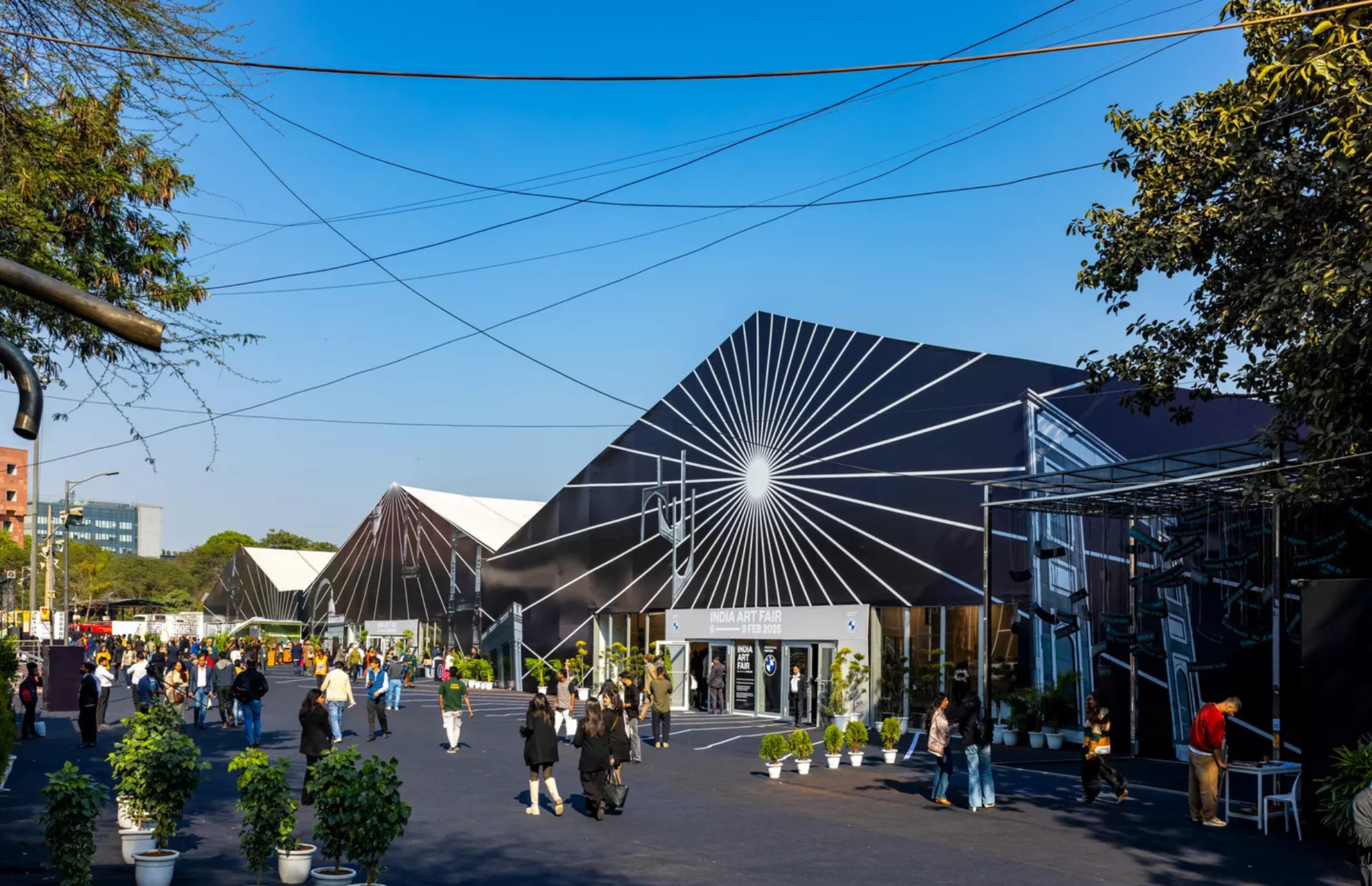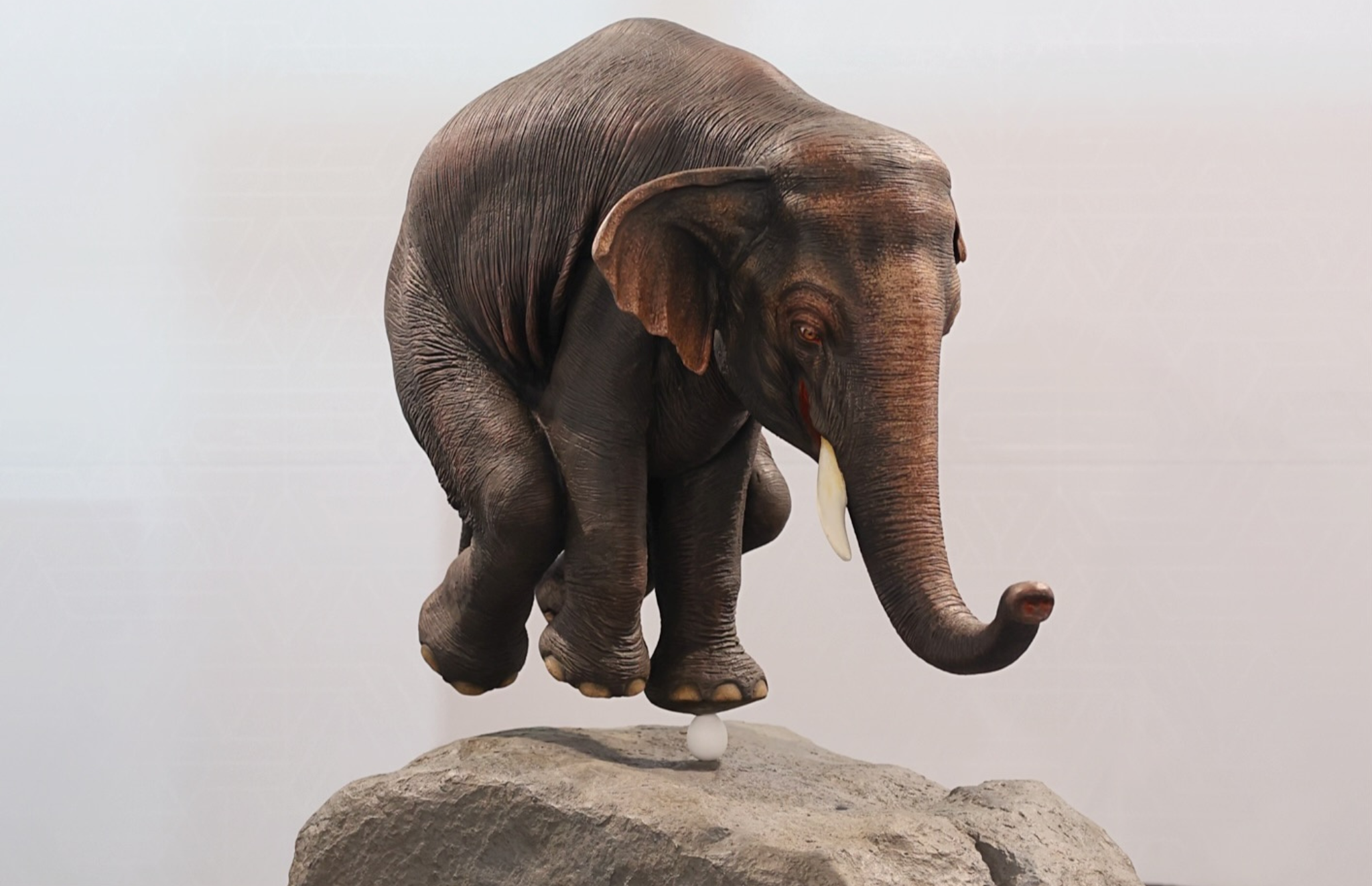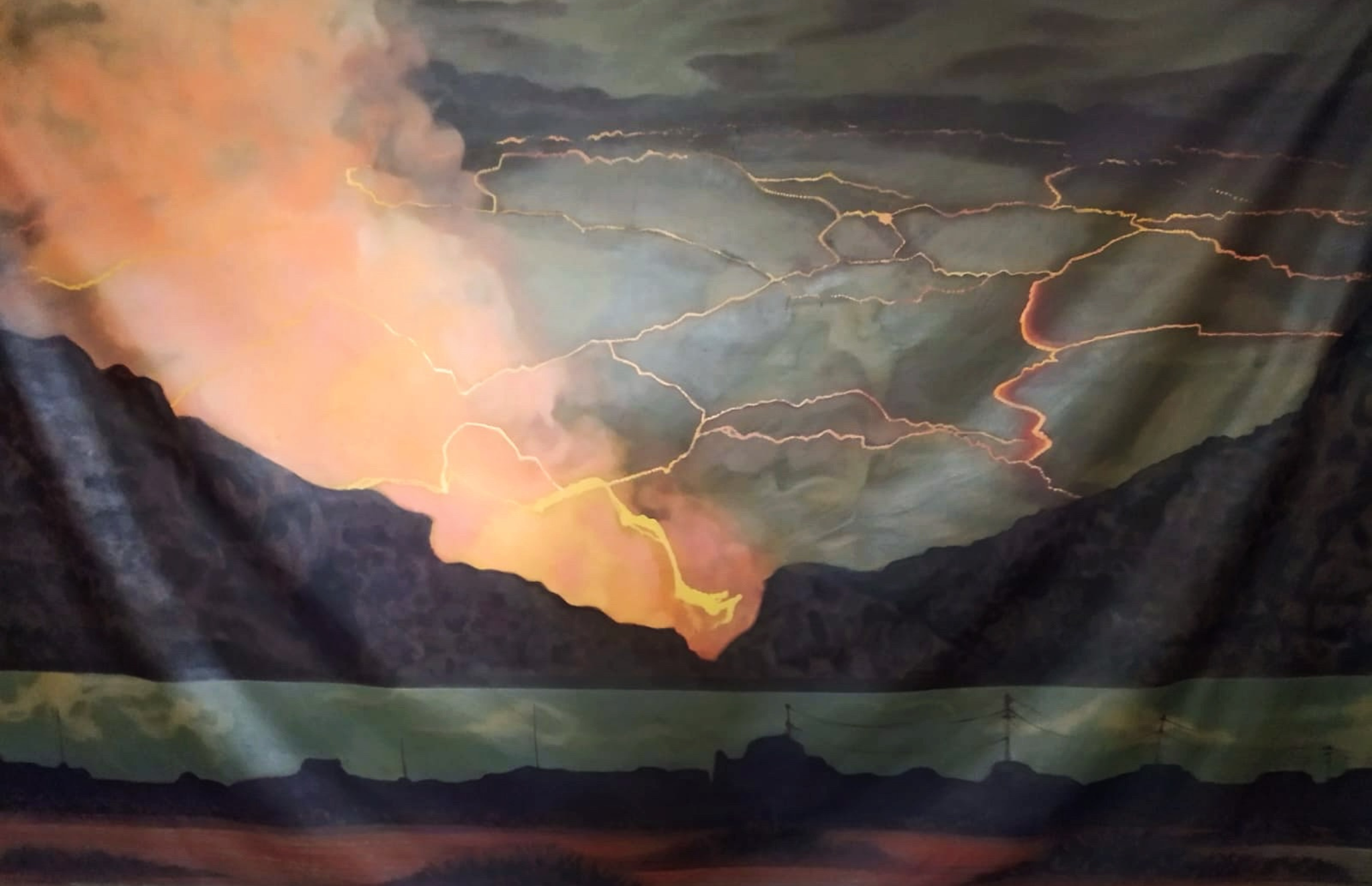A RHYTHM OF DIALOGUES
Breaking the short summer vacations in the capital, art galleries open up their shutters with a focus and responsibility on environmental ethics and wilderness preservation. The art season is upon us, with an explosion of activity and exhibitions with Delhi Art Week and Delhi Contemporary Art Week which is a coming together of several galleries with their respective exhibitions.

It is encouraging to see the city and the art world spring back to life with everyone within the community eager to see and talk about envisionaries and the vivid facets of their artistic expressions. Does art touch the everyday lives of people? Well, that is another conversation for another time. Having said that let us take a quick glance at some of the prominent exhibitions that merit time and attention:
Between Vows and Words: Anupam Sud
Five Decades of Art Practice
KNMA (Kiran Nadar Art Museum)


Anupam Sud being one of India’s foremost intaglio printmakers has indicated that she intends to continue working in a manner that is intense, meditative and an “exacting investigation.” Her practice of more than five decades defies ‘easy classification’ and ‘periodization’. Sud acknowledges her key influences as her father who was a bodybuilder who loved detective stories and Punjabi theatre and of her mother who appreciated classical music and read the Upanishads. She grew as an artist under Som Nath Hore, when he taught in Delhi and her feminist works have been widely appreciated across the world.

The sheer volume and scope of the elusive and discreet artist’s oeuvre is a challenge that cannot be met squarely. She is perhaps one of the most significant Indian artists especially in the context of her extensive engagement with printmaking. Anupam has also consistently mounted a sustained enquiry into the human form and its ‘existential predicaments’.
“Sinister and enigmatic, deceptive and ‘unreal’, these compositions also carry a subtle sense of humour, playfulness, and even mischief. Anupam’s works are often presented in the style of a puzzle or a game,” writes Roobina Karode. The game that Karode refers to is a set of codes that Sud presents her viewer with. For instance, the shared meal, where food acts as a metaphor for the resources that are often not shared between the masculine and the feminine energies, embodied through the man and the woman. “Anupam’s symbolic universe is a dimly lit backstage where men and women rehearse their scripted roles and seductive power,” writes Karode. The other game or metaphor that Sud presents her viewers with is one of dressing up, where the protagonist stands before the mirror, considering her reflection, in some cases she dons lipstick and other make-up and in other instances, she wears a mask. The mask is a powerful metaphor that Sud employs for the chimaera of life that we often engage with to comment on various issues. The works are powerful and engaging, capturing the importance of gender and class.
On till 31 st October 2022

The Lado Sarai Art District opened with a variety of exhibitions that brought alive the linear streets: Exhibit 320, Latitude 28, District XIII, and Art Positive. The coming together of the galleries in Delhi under DAW and DCAW is a recent phenomenon that has been heightened since the Pandemic, to encourage people to visit art galleries and venture out. A joint exhibition allows for galleries to showcase their works together as is the case with DCAW at Bikaner House and to bring alive certain art districts under DAW, like Lado Sarai, Panchsheel Park and Connaught Place to name a few.

Exhibit 320 is hosting the exhibition titled The Virtues of the Landscape which comprises a collection of four artists’ engaging with their environment: Sareena Khemka, Harish Ojha, Puja Mondal, and Suryakant Swain. The work emphasises the significance of adopting ‘new aesthetic perspectives to communicate with landscapes. The exhibition mobilises a range of sensibilities related to the landscape in diverse mediums to expand the many ‘virtues of landscapes’, creating a sense of aesthetic meaning rooted in the conceptual understanding of local and cultural contexts. One thinks it is an important concern since our environment has taken a vast amount of abuse under relentless exploitation with no regard for maintaining a healthy balance between the concretization of cities and towns that one sees across our urban scape. The artists have reacted to maddening patterns rendered by this while commenting strongly on its impact on the ‘disappearance’ of our natural environment.
A layered abstraction occurs in Harish Ojha’s work, where the art absorbs the environment tangibly and engenders a new way of seeing. Puja Mondal’s work, on the other hand, clearly establishes the contradiction between realistic physical terrain and the representation of landscape from interior issues. Sareena Khemka’s work, on the other hand, emphasises the bits of remains gathered by urban terrain. While Suryakanta Swain’s series of drawings portray the incomplete aspect of the development of architectural spaces in the city.
On Till 15 th September 2022
Latitude 28
Pareidolia: Songs Of (Dis)Belief, Recent Watercolours By Jahangir Asgar Jani.
Jani, a Mumbai-based artist, presents a body of watercolours that are not to be deciphered with a single lens. One may contemplate that Jani’s search for meaning lies in his past experience, in the depths of his own personal memories, or in the corner of history. To quote Umberto Eco, from The Name of the Rose, “The order that our mind imagines, is like a net, or like a ladder, built to attain something. But afterwards, you must throw the ladder away, because you discover that, even if it was useful, it was meaningless.”


Pareidolia: songs of (dis)belief’ asks the viewer to shed preconceived notions as you navigate Jahangir Jani’s watercolours. Is it an urban landscape, or monumental calligraphy? When do alphabets become words? How and where do we find meaning? Scribbles and markings on the page become writing and start to make sense.
“Since the relationship between script and language is one that Jani has closely observed, he can deconstruct words and motifs from religious associations, making charms and amulets that protect as much as they provoke. The Panja (a sacred handprint), for example, is now more than a talismanic device and contains multitudes of stories within it,” writes Aparna Andhare, curator of the show. Jani invites you to dwell in the spaces between the chaotic and the spontaneous, to balance the understanding of faith and life that is distinctive in his new show.
On till 25th September 2022
Art Positive
‘Earth songs’
Another exhibition that looks at the importance and relevance of our natural surroundings is ‘Earth songs’ at Art Positive. The exhibition has been curated by Pranamita Borgohain showcasing works of art by over twelve artists, who seek to discover the silent rhythms of nature on planet earth. As an exhibition, it challenges and extends our understanding of contemporary ‘landscape art’. The artists in earth songs seek to discover the silent rhythms of nature, of life pulsating everywhere around us. The earth here is a spiritual entity, connecting us through ancient vibrations not seen but felt. The show features the works of Debasish Dutta, Abhijit Saikia, Kausalya Gadekar, Manisha Agrawal, Parvathy Nayar and Shampa Sircar Das to name a few of the artists.

“In today’s urban life artists are searching for relevant meaning in the shrinking landscape. This search is enhanced as science continues to reveal and explain the mysteries of the natural world. As the human imagination tries to visualise the world of science, the artist turns to landscape as a metaphor for the forces of nature that can only be imagined,” writes Borgohain. Mysterious links between light, space and time are central to this and our understanding of the relationship between these elements is vital to our appreciation of their beauty. We may glimpse these elements in the work and contemplate them alongside the idealised landscapes as presented by the artists.
On till 30 th September 2022
One may catch these exhibitions at Lado Sarai and around the area this autumn then follow up with the big exhibition at Bikaner House.
Text by Georgina Maddox
Image Courtesy: KNMA, Latitude 28, Art Positive, Exhibit 320 and Artists
Find out more about DAW and DCAW:
https://www.knma.in/anupam-sud-between-vows-and-words/
https://www.exhibit320.com/
https://www.latitude28.com/
https://www.galleryartpositive.com/exhibitions_inner.php?id=1901





